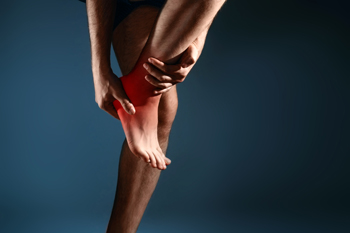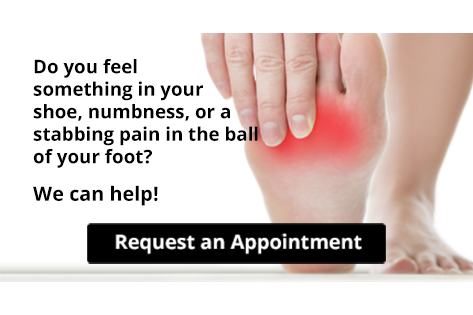Blogs
Runners and Ankle Pain
Many people experience ankle pain at some point in their lives. Runners are typically familiar with this type of pain and discomfort, and are aware of the inconvenience this can cause. If the ankle suddenly twists from stepping off of a curb, the result may be an ankle sprain. This occurs when the ligaments become stretched or torn, and may become swollen. If this should happen, it is necessary to properly heal your ankle, which may prevent additional sprains from occurring. There are existing medical conditions that may cause tendons to rub against the bones in the ankle, which can cause ankle instability. These may include flat feet, and Achilles tendon injuries. Additionally, if poorly fitting shoes are worn, stress fractures may become apparent in the ankles. If you are experiencing any type of ankle pain, it is advised that you consult with a podiatrist who can properly treat this type of ailment.
Ankle pain can be caused by a number of problems and may be potentially serious. If you have ankle pain, consult with Dr. Dean D. Hinners from Illinois. Our doctor will assess your condition and provide you with quality foot and ankle treatment.
Ankle pain is any condition that causes pain in the ankle. Due to the fact that the ankle consists of tendons, muscles, bones, and ligaments, ankle pain can come from a number of different conditions.
Causes
The most common causes of ankle pain include:
- Types of arthritis (rheumatoid, osteoarthritis, and gout)
- Ankle sprains
- Broken ankles
- Achilles tendinitis
- Achilles tendon rupture
- Stress fractures
- Bursitis
- Tarsal tunnel syndrome
- Plantar fasciitis
Symptoms
Symptoms of ankle injury vary based upon the condition. Pain may include general pain and discomfort, swelling, aching, redness, bruising, burning or stabbing sensations, and/or loss of sensation.
Diagnosis
Due to the wide variety of potential causes of ankle pain, podiatrists will utilize a number of different methods to properly diagnose ankle pain. This can include asking for personal and family medical histories and of any recent injuries. Further diagnosis may include sensation tests, a physical examination, and potentially x-rays or other imaging tests.
Treatment
Just as the range of causes varies widely, so do treatments. Some more common treatments are rest, ice packs, keeping pressure off the foot, orthotics and braces, medication for inflammation and pain, and surgery.
If you have any questions, please feel free to contact one of our offices located in Metropolis and Eldorado, IL . We offer the newest diagnostic and treatment technologies for all your foot care needs.
Read more about Ankle Pain
Why Live with Pain and Numbness in Your Feet?
Possible Loss of Cushioning in Elderly Feet
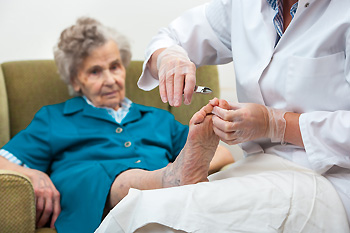 Research has shown the aging process may cause toenails to gradually become brittle, and the feet may lose cushioning. Additionally, seniors may experience circulation issues, which may cause existing wounds to heal slower. It is beneficial to walk frequently throughout the day and perform gentle stretching exercises that can help to improve circulation. It’s important for elderly people to wear shoes that fit correctly, assuring there is ample room for the toes to move freely in. This may be helpful in preventing painful foot conditions from developing, including bunions, hammertoes, and ingrown toenails. The feet will generally feel better when a moisturizer is applied daily, and appropriate shoes are worn in warm and moist environments. These practices may be helpful in preventing cracked heels and athlete’s foot. If you would like additional information about how to care for elderly feet, it is suggested that you consult with a podiatrist.
Research has shown the aging process may cause toenails to gradually become brittle, and the feet may lose cushioning. Additionally, seniors may experience circulation issues, which may cause existing wounds to heal slower. It is beneficial to walk frequently throughout the day and perform gentle stretching exercises that can help to improve circulation. It’s important for elderly people to wear shoes that fit correctly, assuring there is ample room for the toes to move freely in. This may be helpful in preventing painful foot conditions from developing, including bunions, hammertoes, and ingrown toenails. The feet will generally feel better when a moisturizer is applied daily, and appropriate shoes are worn in warm and moist environments. These practices may be helpful in preventing cracked heels and athlete’s foot. If you would like additional information about how to care for elderly feet, it is suggested that you consult with a podiatrist.
Proper foot care is something many older adults forget to consider. If you have any concerns about your feet and ankles, contact Dr. Dean D. Hinners from Illinois. Our doctor can provide the care you need to keep you pain-free and on your feet.
The Elderly and Their Feet
As we age we start to notice many changes in our body, but the elder population may not notice them right away. Medical conditions may prevent the elderly to take notice of their foot health right away. Poor vision is a lead contributor to not taking action for the elderly.
Common Conditions
- Neuropathy – can reduce feeling in the feet and can hide many life-threatening medical conditions.
- Reduced flexibility – prevents the ability of proper toenail trimming, and foot cleaning. If left untreated, it may lead to further medical issues.
- Foot sores – amongst the older population can be serious before they are discovered. Some of the problematic conditions they may face are:
- Gouging toenails affecting nearby toe
- Shoes that don’t fit properly
- Pressure sores
- Loss of circulation in legs & feet
- Edema & swelling of feet and ankles
Susceptible Infections
Diabetes and poor circulation can cause general loss of sensitivity over the years, turning a simple cut into a serious issue.
If you have any questions please feel free to contact one of our offices located in Metropolis and Eldorado, IL . We offer the newest diagnostic and treatment technologies for all your foot and ankle needs.
Read more about Elderly and their FeetWater Retention During Pregnancy May Affect The Feet
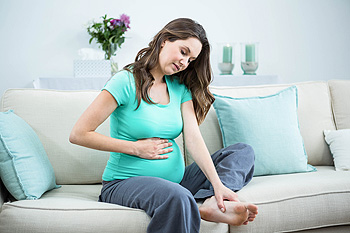 Many pregnant women are aware of water retention in the body as the pregnancy progresses. This typically affects the feet, and causes swelling in the lower extremities. This is a result of an increase in hormones, sodium, and potassium levels that occur during pregnancy. It is helpful to elevate the legs as often as possible, and this may bring moderate relief to throbbing feet. Many pregnant women find it beneficial to limit the amount of salt that is ingested, which is important in regulating water retention. Research has indicated it is helpful to drink plenty of water daily, in addition to performing a gentle exercise routine. If you have concerns about how pregnancy can affect the feet, it is suggested you counsel with a podiatrist.
Many pregnant women are aware of water retention in the body as the pregnancy progresses. This typically affects the feet, and causes swelling in the lower extremities. This is a result of an increase in hormones, sodium, and potassium levels that occur during pregnancy. It is helpful to elevate the legs as often as possible, and this may bring moderate relief to throbbing feet. Many pregnant women find it beneficial to limit the amount of salt that is ingested, which is important in regulating water retention. Research has indicated it is helpful to drink plenty of water daily, in addition to performing a gentle exercise routine. If you have concerns about how pregnancy can affect the feet, it is suggested you counsel with a podiatrist.
Pregnant women with swollen feet can be treated with a variety of different methods that are readily available. For more information about other cures for swollen feet during pregnancy, consult with Dr. Dean D. Hinners from Illinois. Our doctor will attend to all of your foot and ankle needs.
What Foot Problems Can Arise During Pregnancy?
One problem that can occur is overpronation, which occurs when the arch of the foot flattens and tends to roll inward. This can cause pain and discomfort in your heels while you’re walking or even just standing up, trying to support your baby.
Another problem is edema, or swelling in the extremities. This often affects the feet during pregnancy but tends to occur in the later stages.
How Can I Keep My Feet Healthy During Pregnancy?
- Wearing orthotics can provide extra support for the feet and help distribute weight evenly
- Minimize the amount of time spent walking barefoot
- Wear shoes with good arch support
- Wear shoes that allow for good circulation to the feet
- Elevate feet if you experience swelling
- Massage your feet
- Get regular, light exercise, such as walking, to promote blood circulation to the feet
If you have any questions please feel free to contact one of our offices located in Metropolis and Eldorado, IL . We offer the newest diagnostic and treatment technologies for all your foot and ankle needs.
Read more about Pregnancy and Foot HealthWho Does Sever’s Disease Affect?
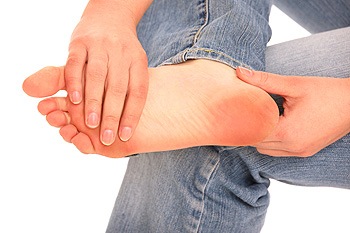 An injury that has occurred to the growth plate in the heel may be referred to as Sever’s disease. This type of injury typically affects teenagers who frequently practice sporting activities that include running and jumping. The symptoms that are generally associated with this condition can consist of heel pain, and it may be difficult to walk. It is beneficial for the child to cease participating in the activity that causes this condition to develop as the healing process occurs. Benefits may come from performing specific stretching techniques that may help the heel and the overall health of the foot. If your child tells you he or she has heel pain, it may be Sever’s disease, and it is suggested that you speak to a podiatrist so the proper treatment can begin.
An injury that has occurred to the growth plate in the heel may be referred to as Sever’s disease. This type of injury typically affects teenagers who frequently practice sporting activities that include running and jumping. The symptoms that are generally associated with this condition can consist of heel pain, and it may be difficult to walk. It is beneficial for the child to cease participating in the activity that causes this condition to develop as the healing process occurs. Benefits may come from performing specific stretching techniques that may help the heel and the overall health of the foot. If your child tells you he or she has heel pain, it may be Sever’s disease, and it is suggested that you speak to a podiatrist so the proper treatment can begin.
Sever's disease often occurs in children and teens. If your child is experiencing foot or ankle pain, see Dr. Dean D. Hinners from Illinois. Our doctor can treat your child’s foot and ankle needs.
Sever’s Disease
Sever’s disease is also known as calcaneal apophysitis, which is a medical condition that causes heel pain I none or both feet. The disease is known to affect children between the ages of 8 and 14.
Sever’s disease occurs when part of the child’s heel known as the growth plate (calcaneal epiphysis) is attached to the Achilles tendon. This area can suffer injury when the muscles and tendons of the growing foot do not keep pace with bone growth. Therefore, the constant pain which one experiences at the back of the heel will make the child unable to put any weight on the heel. The child is then forced to walk on their toes.
Symptoms
Acute pain – Pain associated with Sever’s disease is usually felt in the heel when the child engages in physical activity such as walking, jumping and or running.
Highly active – Children who are very active are among the most susceptible in experiencing Sever’s disease, because of the stress and tension placed on their feet.
If you have any questions, please feel free to contact one of our offices located in Metropolis and Eldorado, IL . We offer the newest diagnostic and treatment technologies for all your foot and ankle injuries.
Read more about Sever's DiseaseMethods on How to Properly Measure Feet
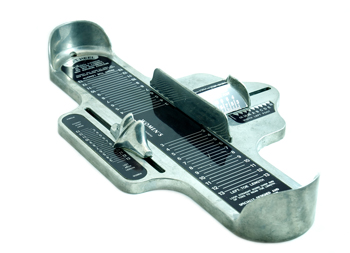 When shoes fit properly, the feet will generally feel good. This being stated, research has indicated that many people wear shoes that are the wrong size, and can cause foot conditions to develop which may include bunions and hammertoes. Many people choose to purchase shoes that are slightly tight, and they often think the shoes will gradually stretch to accommodate their foot. It is important to properly measure the foot which can help to determine the correct shoe size. This can be accomplished by tracing the foot on a piece of paper, and it is helpful to wear the socks that are typically worn with the chosen shoes. At this point, the width and length of the foot can be measured. An alternative would be to use a Brannock device, which is found it many shoe stores. A podiatrist is able to provide you with additional information about how to buy shoes that fit correctly.
When shoes fit properly, the feet will generally feel good. This being stated, research has indicated that many people wear shoes that are the wrong size, and can cause foot conditions to develop which may include bunions and hammertoes. Many people choose to purchase shoes that are slightly tight, and they often think the shoes will gradually stretch to accommodate their foot. It is important to properly measure the foot which can help to determine the correct shoe size. This can be accomplished by tracing the foot on a piece of paper, and it is helpful to wear the socks that are typically worn with the chosen shoes. At this point, the width and length of the foot can be measured. An alternative would be to use a Brannock device, which is found it many shoe stores. A podiatrist is able to provide you with additional information about how to buy shoes that fit correctly.
It is important to find shoes that fit you properly in order to avoid a variety of different foot problems. For more information about treatment, contact Dr. Dean D. Hinners from Illinois. Our doctor will treat your foot and ankle needs.
Proper Shoe Fitting
Shoes have many different functions. They cushion our body weight, protect our feet, and allow us to safely play sports. You should always make sure that the shoes you wear fit you properly in order to avoid injuries and deformities such as: bunions, corns, calluses, hammertoes, plantar fasciitis, stress fractures, and more. It is important to note that although a certain pair of shoes might be a great fit for someone else, that doesn’t mean they will be a great fit for you. This is why you should always try on shoes before buying them to make sure they are worth the investment. Typically, shoes need to be replaced ever six months to one year of regular use.
Tips for Proper Shoe Fitting
- Select a shoe that is shaped like your foot
- Don’t buy shoes that fit too tight, expecting them to stretch to fit
- Make sure there is enough space (3/8” to ½”) for your longest toe at the end of each shoe when you are standing up
- Walk in the shoes to make sure they fit and feel right
- Don’t select shoes by the size marked inside the shoe, but by how the shoe fits your foot
The shoes you buy should always feel as good as they look. Shoes that fit properly will last longer, feel better, and improve your way of life each day.
If you have any questions, please feel free to contact one of our offices located in Metropolis and Eldorado, IL . We offer the newest diagnostic and treatment technologies for all your foot care needs.
Read more about How to Get a Proper Shoe FitDo Your Child's Feet Hurt?
Wearing Supportive Shoes May Help Flat Feet
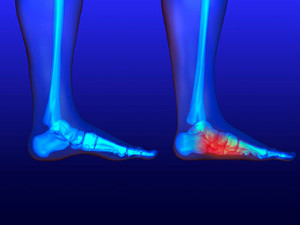 The medical term that is known as flat feet refers to an absence of an arch in the foot. This condition is noticeable when the foot lies completely flat on the floor, and can change the structure of the foot. The majority of babies are born with flat feet, and the arch will typically develop in the teenage years. Additional reasons why flat feet may occur can include genetics, an injury that has happened to the foot, or existing medical conditions such as arthritis and diabetes. If there is discomfort, moderate relief may be found when shoes that have adequate support are worn. It may be advantageous for overweight patients to lose excess pounds, and this may be helpful in relieving pressure on the feet. If you are afflicted with flat feet, it is suggested that you schedule a consultation with a podiatrist who can properly treat flat feet.
The medical term that is known as flat feet refers to an absence of an arch in the foot. This condition is noticeable when the foot lies completely flat on the floor, and can change the structure of the foot. The majority of babies are born with flat feet, and the arch will typically develop in the teenage years. Additional reasons why flat feet may occur can include genetics, an injury that has happened to the foot, or existing medical conditions such as arthritis and diabetes. If there is discomfort, moderate relief may be found when shoes that have adequate support are worn. It may be advantageous for overweight patients to lose excess pounds, and this may be helpful in relieving pressure on the feet. If you are afflicted with flat feet, it is suggested that you schedule a consultation with a podiatrist who can properly treat flat feet.
Flatfoot is a condition many people suffer from. If you have flat feet, contact Dr. Dean D. Hinners from Illinois. Our doctor will treat your foot and ankle needs.
What Are Flat Feet?
Flatfoot is a condition in which the arch of the foot is depressed and the sole of the foot is almost completely in contact with the ground. About 20-30% of the population generally has flat feet because their arches never formed during growth.
Conditions & Problems:
Having flat feet makes it difficult to run or walk because of the stress placed on the ankles.
Alignment – The general alignment of your legs can be disrupted, because the ankles move inward which can cause major discomfort.
Knees – If you have complications with your knees, flat feet can be a contributor to arthritis in that area.
Symptoms
- Pain around the heel or arch area
- Trouble standing on the tip toe
- Swelling around the inside of the ankle
- Flat look to one or both feet
- Having your shoes feel uneven when worn
Treatment
If you are experiencing pain and stress on the foot you may weaken the posterior tibial tendon, which runs around the inside of the ankle.
If you have any questions please feel free to contact one of our offices located in Metropolis and Eldorado, IL . We offer the newest diagnostic and treatment technologies for all your foot and ankle needs.
Read more about Flat FeetAstros Player Strong After Achilles Tendon Rupture
 Pitcher Joe Smith of the Houston Astros was facing a long and tough recovery when he ruptured the Achilles tendon in his right ankle last December. Instead of choosing to end his career, however, Smith took on rehabilitation after receiving surgery for the repair. Smith’s decision has proven to be the right one, as the player made his return to the field for the first time this year on July 14th, and he’s been strong and solid since. Smith has played 20 games for the Houston Astros since his return, and in those games, he’s allowed only three earned runs. The pitcher’s proven resilience has made him a key player for the Astros as they move forward. If you believe that you’ve experienced an Achilles tendon injury, consult with your podiatrist.
Pitcher Joe Smith of the Houston Astros was facing a long and tough recovery when he ruptured the Achilles tendon in his right ankle last December. Instead of choosing to end his career, however, Smith took on rehabilitation after receiving surgery for the repair. Smith’s decision has proven to be the right one, as the player made his return to the field for the first time this year on July 14th, and he’s been strong and solid since. Smith has played 20 games for the Houston Astros since his return, and in those games, he’s allowed only three earned runs. The pitcher’s proven resilience has made him a key player for the Astros as they move forward. If you believe that you’ve experienced an Achilles tendon injury, consult with your podiatrist.
Achilles tendon injuries need immediate attention to avoid future complications. If you have any concerns, contact Dr. Dean D. Hinners of Illinois. Our doctor can provide the care you need to keep you pain-free and on your feet.
What Is the Achilles Tendon?
The Achilles tendon is a tendon that connects the lower leg muscles and calf to the heel of the foot. It is the strongest tendon in the human body and is essential for making movement possible. Because this tendon is such an integral part of the body, any injuries to it can create immense difficulties and should immediately be presented to a doctor.
What Are the Symptoms of an Achilles Tendon Injury?
There are various types of injuries that can affect the Achilles tendon. The two most common injuries are Achilles tendinitis and ruptures of the tendon.
Achilles Tendinitis Symptoms
- Inflammation
- Dull to severe pain
- Increased blood flow to the tendon
- Thickening of the tendon
Rupture Symptoms
- Extreme pain and swelling in the foot
- Total immobility
Treatment and Prevention
Achilles tendon injuries are diagnosed by a thorough physical evaluation, which can include an MRI. Treatment involves rest, physical therapy, and in some cases, surgery. However, various preventative measures can be taken to avoid these injuries, such as:
- Thorough stretching of the tendon before and after exercise
- Strengthening exercises like calf raises, squats, leg curls, leg extensions, leg raises, lunges, and leg presses
If you have any questions please feel free to contact one of our offices located in Metropolis and Eldorado, IL . We offer the newest diagnostic tools and technology to treat your foot and ankle needs.
Read more about What are Achilles Tendon InjuriesCan Walking Help Poor Circulation?
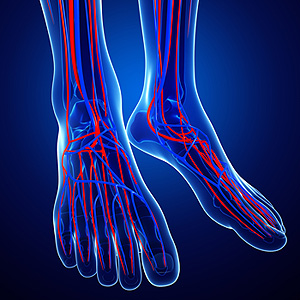 The medical condition that is known as poor circulation occurs when blood flow is restricted in the body. Common symptoms that are associated with this condition can include cold feet, in addition to a tingling and numbing sensation. This risk of developing poor circulation may increase as the aging process occurs. Other existing factors that can lead to this condition can include smoking, lack of exercise, and eating unhealthy foods. There are noticeable symptoms that are present if poor circulation exists. The most common sign is feeling cramps in your legs as you walk, and some patients are aware of consistent aches in their legs and feet. Mild relief can be obtained when a gentle walking program is implemented, and this can be helpful in controlling poor circulation. If you feel you have symptoms of this condition, it is suggested that you schedule a consultation with a podiatrist who can properly treat this condition.
The medical condition that is known as poor circulation occurs when blood flow is restricted in the body. Common symptoms that are associated with this condition can include cold feet, in addition to a tingling and numbing sensation. This risk of developing poor circulation may increase as the aging process occurs. Other existing factors that can lead to this condition can include smoking, lack of exercise, and eating unhealthy foods. There are noticeable symptoms that are present if poor circulation exists. The most common sign is feeling cramps in your legs as you walk, and some patients are aware of consistent aches in their legs and feet. Mild relief can be obtained when a gentle walking program is implemented, and this can be helpful in controlling poor circulation. If you feel you have symptoms of this condition, it is suggested that you schedule a consultation with a podiatrist who can properly treat this condition.
While poor circulation itself isn’t a condition; it is a symptom of another underlying health condition you may have. If you have any concerns with poor circulation in your feet contact Dr. Dean D. Hinners of Illinois. Our doctor will treat your foot and ankle needs.
Poor Circulation in the Feet
Peripheral artery disease (PAD) can potentially lead to poor circulation in the lower extremities. PAD is a condition that causes the blood vessels and arteries to narrow. In a linked condition called atherosclerosis, the arteries stiffen up due to a buildup of plaque in the arteries and blood vessels. These two conditions can cause a decrease in the amount of blood that flows to your extremities, therefore resulting in pain.
Symptoms
Some of the most common symptoms of poor circulation are:
- Numbness
- Tingling
- Throbbing or stinging pain in limbs
- Pain
- Muscle Cramps
Treatment for poor circulation often depends on the underlying condition that causes it. Methods for treatment may include insulin for diabetes, special exercise programs, surgery for varicose veins, or compression socks for swollen legs.
As always, see a podiatrist as he or she will assist in finding a regimen that suits you. A podiatrist can also prescribe you any needed medication.
If you have any questions, please feel free to contact one of our offices located in Metropolis and Eldorado, IL . We offer the newest diagnostic and treatment technologies for all your foot care needs.
Read more about Causes Symptoms and Treatment for Poor Circulation in the FeetMore...
What Are the Symptoms of Toenail Fungus?
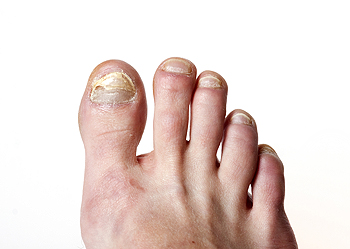 Patients who have experienced toenail fungus typically find it may take a long time to treat. Common symptoms of this type of fungus often include a yellowing and thickening of the toenails, and they can crack as a result of becoming brittle. Toenail fungus may develop if the toes are frequently in a warm and moist environment, which can include hot and sweaty shoes. Additionally, it may be present in public pools, shower room floors, and surrounding areas. There are methods that can be implemented which may help to prevent this condition from developing. These can consist of wearing appropriate shoes while in public areas, keeping the feet clean and dry, and wearing clean socks daily. If you believe you have symptoms of toenail fungus, it is advised that you seek the counsel of a podiatrist who can guide you towards the proper treatment.
Patients who have experienced toenail fungus typically find it may take a long time to treat. Common symptoms of this type of fungus often include a yellowing and thickening of the toenails, and they can crack as a result of becoming brittle. Toenail fungus may develop if the toes are frequently in a warm and moist environment, which can include hot and sweaty shoes. Additionally, it may be present in public pools, shower room floors, and surrounding areas. There are methods that can be implemented which may help to prevent this condition from developing. These can consist of wearing appropriate shoes while in public areas, keeping the feet clean and dry, and wearing clean socks daily. If you believe you have symptoms of toenail fungus, it is advised that you seek the counsel of a podiatrist who can guide you towards the proper treatment.
For more information about treatment, contact Dr. Dean D. Hinners of Illinois. Our doctor can provide the care you need to keep you pain-free and on your feet.
Toenail Fungus Treatment
Toenail fungus is a condition that affects many people and can be especially hard to get rid of. Fortunately, there are several methods to go about treating and avoiding it.
Antifungals & Deterrence
Oral antifungal medicine has been shown to be effective in many cases. It is important to consult with a podiatrist to determine the proper regiment for you, or potentially explore other options.
Applying foot powder on the feet and shoes helps keep the feet free of moisture and sweat.
Sandals or open toed shoes – Wearing these will allow air movement and help keep feet dry. They also expose your feet to light, which fungus cannot tolerate. Socks with moisture wicking material also help as well.
If you have any questions please feel free to contact one of our offices located in Metropolis and Eldorado, IL . We offer the newest diagnostic tools and technology to treat your foot and ankle needs.
Read more about How to Treat Your Toenail FungusBefore you start dancing...
Is Gout Painful?
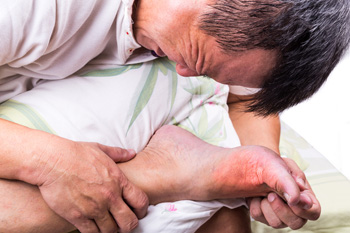 The medical condition that is referred to as gout typically occurs as a result of excess uric acid levels in the blood. This can happen for a variety of reasons including genetic factors, metabolic disorders, or it may develop from a diet that is rich in purines. Foods that fall into this category can consist of shellfish, red meat, and excess alcohol. The symptoms that many patients experience can include severe pain and discomfort in the joints of the big toe, as well as swelling, and tenderness. A proper diagnosis can be determined by extracting a small amount of fluid from the affected joint. This can also help to determine the severity of the condition. There are measures that can be implemented to help to prevent gout, which include eating a healthy diet that is rich in vegetables, and limiting red meat and alcohol. If you are experiencing symptoms of gout, please consult with a podiatrist who can help you to manage the pain and properly treat this condition.
The medical condition that is referred to as gout typically occurs as a result of excess uric acid levels in the blood. This can happen for a variety of reasons including genetic factors, metabolic disorders, or it may develop from a diet that is rich in purines. Foods that fall into this category can consist of shellfish, red meat, and excess alcohol. The symptoms that many patients experience can include severe pain and discomfort in the joints of the big toe, as well as swelling, and tenderness. A proper diagnosis can be determined by extracting a small amount of fluid from the affected joint. This can also help to determine the severity of the condition. There are measures that can be implemented to help to prevent gout, which include eating a healthy diet that is rich in vegetables, and limiting red meat and alcohol. If you are experiencing symptoms of gout, please consult with a podiatrist who can help you to manage the pain and properly treat this condition.
Gout is a foot condition that requires certain treatment and care. If you are seeking treatment, contact Dr. Dean D. Hinners from Illinois. Our doctor will treat your foot and ankle needs.
What Is Gout?
Gout is a type of arthritis caused by a buildup of uric acid in the bloodstream. It often develops in the foot, especially the big toe area, although it can manifest in other parts of the body as well. Gout can make walking and standing very painful and is especially common in diabetics and the obese.
People typically get gout because of a poor diet. Genetic predisposition is also a factor. The children of parents who have had gout frequently have a chance of developing it themselves.
Gout can easily be identified by redness and inflammation of the big toe and the surrounding areas of the foot. Other symptoms include extreme fatigue, joint pain, and running high fevers. Sometimes corticosteroid drugs can be prescribed to treat gout, but the best way to combat this disease is to get more exercise and eat a better diet.
If you have any questions please feel free to contact one of our offices located in Metropolis and Eldorado, IL . We offer the newest diagnostic and treatment technologies for all your foot and ankle needs.
Read more about GoutWho Does Sever’s Disease Affect?
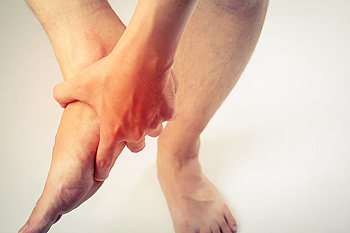 The medical condition that is referred to as Sever’s disease affects the growth plate in the heel. It typically occurs during a growth spurt that happens during puberty. The people that may experience this are teenagers who participate in running and jumping activities, and the growth plate may become injured. The symptoms that are commonly associated with this condition include heel pain, limping, and the feet may feel stiff upon arising in the morning. Mild relief can be found when shoe inserts are worn which can help to protect the heel, and wearing an elastic bandage may aid in reducing existing pain and swelling. If you notice your child is experiencing any of these symptoms, please schedule a consultation with a podiatrist, who can properly diagnosis and treat Sever’s disease.
The medical condition that is referred to as Sever’s disease affects the growth plate in the heel. It typically occurs during a growth spurt that happens during puberty. The people that may experience this are teenagers who participate in running and jumping activities, and the growth plate may become injured. The symptoms that are commonly associated with this condition include heel pain, limping, and the feet may feel stiff upon arising in the morning. Mild relief can be found when shoe inserts are worn which can help to protect the heel, and wearing an elastic bandage may aid in reducing existing pain and swelling. If you notice your child is experiencing any of these symptoms, please schedule a consultation with a podiatrist, who can properly diagnosis and treat Sever’s disease.
Sever's disease often occurs in children and teens. If your child is experiencing foot or ankle pain, see Dr. Dean D. Hinners from Illinois. Our doctor can treat your child’s foot and ankle needs.
Sever’s Disease
Sever’s disease is also known as calcaneal apophysitis, which is a medical condition that causes heel pain I none or both feet. The disease is known to affect children between the ages of 8 and 14.
Sever’s disease occurs when part of the child’s heel known as the growth plate (calcaneal epiphysis) is attached to the Achilles tendon. This area can suffer injury when the muscles and tendons of the growing foot do not keep pace with bone growth. Therefore, the constant pain which one experiences at the back of the heel will make the child unable to put any weight on the heel. The child is then forced to walk on their toes.
Symptoms
Acute pain – Pain associated with Sever’s disease is usually felt in the heel when the child engages in physical activity such as walking, jumping and or running.
Highly active – Children who are very active are among the most susceptible in experiencing Sever’s disease, because of the stress and tension placed on their feet.
If you have any questions, please feel free to contact one of our offices located in Metropolis and Eldorado, IL . We offer the newest diagnostic and treatment technologies for all your foot and ankle injuries.
Read more about Sever's Disease